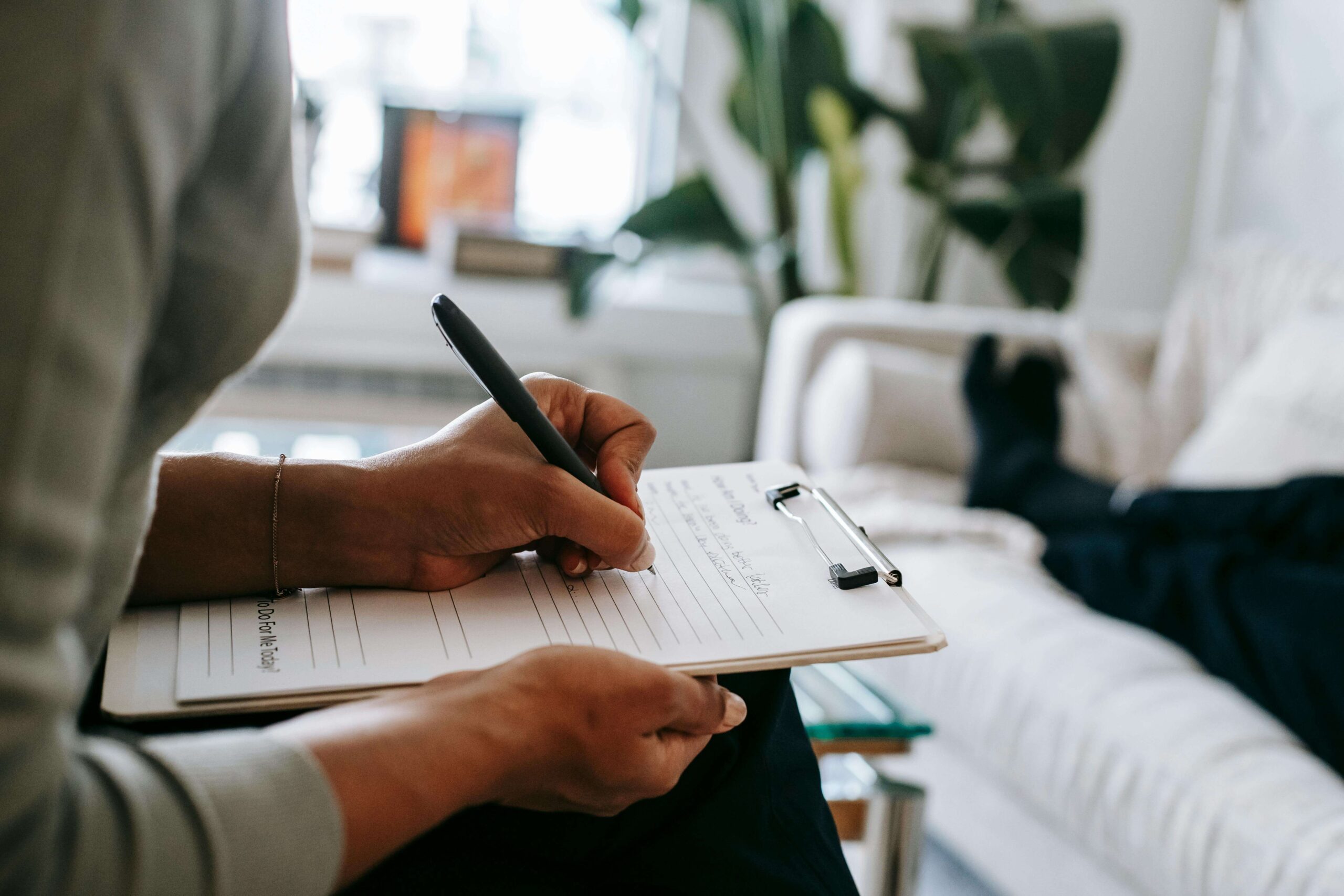Advanced Large Group Health Insurance Strategies (50 Full Time Employees and Up)
How Large Employers Can Save Up to 50% Per Employee on Group Health, With No ACA Shared Responsibility Penalty.
Discover health solutions for large businesses that can save you – and your employees – hard-earned money.

By Wiley Long III, President – HSA for America
Reviewed by Lou Spatafore
Fact checked by Misty Berryman – Updated 8/27/2025
Request a Large Group Health Insurance Quote for Your Company
Cut Large Group Health Insurance Costs in Half
The average annual cost of employee group health insurance has reached a staggering $25,572.
According to the 2024 KFF Employer Health Benefits Survey.
However, tremendous benefit cost savings are possible thanks to new large group health insurance coverage options.
The strategies we employ may enable you to cut your costs in half. All while avoiding costly shared responsibility penalties under the Affordable Care Act. An employer with 200 employees may save over $1 million per year.
Specifically, employers using this strategy allow their employees to choose either one of two coverage options:
Option One
A non-insurance cost sharing program.
Option Two
Health insurance for large groups, through a level-funded plan or an ICHRA reimbursement.
Option 1: Cost Sharing
Health sharing or co-op organizations are collections of businesses that agree to share medical costs, but without an insurance company middle-man.

Catastrophic Protection
Wellness & Preventative Care
Visit Any Doctor of Choosing
Because these arrangements are not considered to be “insurance”, they have several advantages over traditional group health insurance – not the least of which is much lower costs!
And because no one likes restrictive HMO networks, this plan allows your employees to go to any doctor they choose!
Typically most employees will choose this option because of the lower costs and greater flexibility. However, with cost sharing there are waiting periods for pre-existing conditions, so Option 1 will probably not work for all employees.
“We were hesitant at first to move our company’s health care plan away from the larger corporations, but have found the transition to be rewarding for our employees and less expensive for us as a company. In fact, our savings were so significant that our firm offered to cover our employee’s first major incident as an added benefit to our staff.”
Preston Jenson, Managing Partner, Panda Accounting
“We are very impressed with the level of coverage that they provide and appreciate their consistent efforts and success in making these plans better each year. Our employees are covered for all preventive and emergency needs, and they have access to a wide network of doctors and hospitals.”
Christine Gott, Director of HR, GVA Property Management
Option 2: Health Insurance
This is structured through a streamlined level-funded group plan, or through an ICHRA that will allow your employees to get individual coverage through the marketplace.

For those employees who choose to go with a health insurance option, we will set up a level funded large group health plan. Alternately, we will use financial tool called an ICHRA to fund individual health insurance.
A level-funded health plan is a group insurance option that blends characteristics of fully insured benefit plans with self-insured plans. It is commonly used by applicable large employers (ALEs).
With a level-funded plan, the employer pays a fixed monthly payment as coverage.
If claims are lower than anticipated, the employer will receive a refund at the end of the year. If claims are higher, stop-loss insurance steps in to cover the overage, limiting your risk.
An ICHRA, on the other hand, also known as a health reimbursement arrangement, is a way for you to reimburse your employee’s cost for an individual health insurance policy purchased on the marketplace.
This ensures that the benefit is still tax-free to the employee, just as group health insurance would be.
If we set up an ICHRA, employees will sign up for their plan on the health insurance marketplace.
So which option is best, Option 1 or Option 2?
The answer to this question is different for each individual and household.
But here is the general rule:
- Most employees without serious pre-existing conditions will choose the cost sharing option because of its much lower costs.
- Those with pre-existing conditions will usually choose the insurance plan, which will not have any waiting periods on pre-existing conditions.
Implementing this strategy will not only make healthcare more affordable for both your business and your employees, it will also provide most of them with a much better experience when they do interact with the healthcare system.
Not an ALE? Click Here for “Health Care Strategies for Smaller Employers”
Request a Large Group Health Insurance Quote for Your Company

Complete Guide to Small Business Healthcare Plans
Free PDF Download
Explore this step-by-step report backed by the knowledge and experience of our in-house small group insurance experts.
Shared Responsibility Penalties
You will not be subject to any shared responsibility penalties under this program.
Larger employers with 50+ FTEs or the equivalent (applicable large employers, or ALEs) are subject to two shared responsibility penalties under the Affordable Care Act. However, when we implement this program and offer all of your employees a choice, you will be exempt from any penalties.
The Part A Penalty
For shared responsibility penalties: If you don’t offer minimum essential coverage to 95% of your full-time employees, you’ll face the ACA’s “A” penalty. This penalty can cost up to $2,900 per employee per year (in 2025).
The Part B Penalty
If the coverage you offer doesn’t meet the ACA’s minimum value rules, or isn’t affordable, you’ll face the ACA’s “B” penalty. In this case, you’ll be charged up to $4,350 per employee who receives a subsidy through the ACA Exchanges.
Your company will not be subject to Part A or Part B shared responsibility penalties. This is because you have offered your qualified workers an opportunity to sign up for health insurance, or a cost-sharing alternative.
As an applicable large employer, you have options that can save a substantial amount of money. Give your employees the access to affordable, quality healthcare they need and deserve without a significant financial hit.
Learn More: How Much Can Health Sharing Save Compared to Traditional Health Insurance?
“Our experience has been exceptional… The benefits are affordable, comprehensive, and offer excellent coverage. The team is responsive and a pleasure to work with.”
Heather Gray, Chief Operating Officer, Hendersonville-Mill Springs Family Dental
How Cost Sharing Helps Pay for Large and Catastrophic Costs
Cost Health sharing and coop plans are innovative, non-insurance, non-profit programs. They allow employees to share medical expenses with a community of like-minded individuals.
Lower Costs
Cost sharing plans typically have much lower monthly contributions than traditional insurance. Monthly costs are typically around half the cost of a traditional legacy group health policy.
Sharing medical costs spreads the risk around thousands of fellow members and lowers the burden on any one business.
Member Responsibility Amount
Once a member meets their “member responsibility amount,” the community shares the remaining eligible medical costs. The member responsibility amount is often modest and is similar to a deductible.
This helps employees avoid high additional out-of-pocket expenses found in traditional plans. Examples of these include copays and coinsurance.
Limitations
Cost sharing plans don’t pay for every medical expense, and often limit payments for prescription drugs and mental health care.
They also typically impose a waiting period before they will share costs for pre-existing conditions. This is why many people with significant pre-existing conditions often choose the health insurance option.
SPECIAL OFFER FOR GROUP SIZES OF 50+
Pre-existing condition waiting periods waived! Our health share plan partners and will share up to $25,000 per member for pre-existing conditions.
Why Are Cost Sharing Plans So Inexpensive Compared to Health Insurance?
Unlike traditional health insurance plans subject to Affordable Care Act (ACA) requirements, health sharing plans attract healthier members and have lower costs.

Membership is restricted to people who don’t abuse drugs or alcohol, for example.
And health sharing programs aren’t required to pay for things that most members don’t want or need. This could include gender reassignment surgery or costly drug addiction rehab for adults.
The result is a much better risk pool. It enables much lower overall costs for members compared to health insurance products. And it ensures large group employee benefits that largely work for the group.
However, this is also why health sharing isn’t always a great match for workers who have pre-existing conditions.
Under this concept, you give these employees a choice. Specifically:
- A cost sharing option for those in good health
- An ACA-qualified traditional health insurance plan for those with some medical issues.
Like anything in life, choice in healthcare options simply means happier and more supported employees. And when you offer your employees precisely what they need, isn’t that the best benefit you can offer?
“Our experience with them has been outstanding. Not only are they affordable, but their flexibility in offering a variety of plans has been instrumental in meeting the diverse needs of our employees across multiple states. Their hands-on approach, especially during the initial stages of our partnership, was invaluable. They provided comprehensive resources and guided us through every step of the enrollment process, ensuring that we were fully supported.”
Lacee Shapley, Human Resources Manager, Enviro Guard Pest Control
Summary: How to Cut Your Company Benefit Costs by $100,000/year
Health sharing plans are inherently cost effective. And they are cost effective without sacrificing quality of care or coverage! By offering your employees a choice of a cost sharing plan, you will notice three benefits:
- You will avoid part A and part B penalties.
- You will be giving your employees a choice between health insurance or less expensive healthsharing.
- You are saving your employees and your company a significant amount of money.
But the benefits don’t stop there. Here are some additional ways these plans can help your employees:
Cost Sharing Plans
- 100% sharing for preventive services
- lower costs for employers and employees
- do not by themselves protect employers from the ACA’s “B” penalty
- Most cost sharing plans have a waiting period before they will share costs for pre-existing conditions. However, with our plan, pre-existing conditions are shareable up to $25,000 for groups of 50 or more.
Health Insurance Plans
- Can be set up as individual plans or a level-funded group plan, depending on which offers the best value
- Cover a wider range of healthcare services, including hospital and doctor visits
- Cover pre-existing conditions without a waiting period
- Premiums are higher compared to cost sharing, but lower than traditional large group health plans
Request a Large Group Health Insurance Quote for Your Company
Why Most Workers Will Actually Prefer Cost Sharing to Traditional Group HMOs and PPOs
Health solutions for large businesses are not a completely novel concept, but they haven’t been around as long as HMOs and PPOs.
The concept of large group health insurance is likely new to a lot of ALE work forces. We often find that it’s necessary to invest some effort in some employee education when introducing this offering.
But when employees fully understand the cost and structure of health sharing, the results speak for themselves. Many employees find that they’re better served by a cost sharing solution over overpriced, traditional group health plans.
Here’s why:
- No Coinsurance or Copays: Once a member meets their responsibility amount, these plans typically cover 100% of eligible expenses. This means employees won’t have to deal with additional copays or coinsurance. This can be especially appealing to younger, healthier workers who don’t anticipate high medical expenses.
- They can choose their own doctors. Traditional HMOs and PPOs require workers to choose approved providers for non-emergency care. However, our cost sharing plans allow members to see any doctor they choose.
- Lower Monthly Costs: Cost sharing plans typically have much lower monthly costs compared to traditional insurance. This makes them attractive to healthy workers who want to minimize their healthcare spending.
While traditional health plans like HMOs and PPOs have been offered for generations, they’re hardly the only game in town any longer. But even more so, their time and place in the workforce is no longer relevant to the entire workforce. Think of these large group medical insurance policies as the most traditional product an employer can offer. And with that tradition comes drawbacks aplenty.
Cost Sharing Plans vs. Health Insurance at a Glance
| Features | Cost Sharing Option | Health Insurance Option |
|---|---|---|
| Definition | Non-insurance health sharing or co-op arrangement for sharing medical costs | Health plan that covers at least 60% of total healthcare costs and includes substantial medical services |
| ACA Compliance | Meets ACA requirements for offering basic preventive services | Meets ACA employer mandate by offering at least 60% of covered benefits (minimum value) |
| Covered Services | Pays for all preventive services like vaccinations, screenings, and wellness visits. Health sharing component shares for large/catastrophic costs. | Covers a broader range of services including hospital stays, physician services, surgeries, and more. Employees responsible for 40% of cost, up to plan out-of-pocket caps. |
| Comprehensive Coverage or Sharing | Yes | Yes |
| ACA Shared Responsibility Penalties | Avoids shared responsibility penalties when offered in conjunction with a qualified health insurance option | Avoids shared responsibility penalties by offering minimum value and affordable coverage |
| Premium Costs | Much lower monthly costs compared to traditional health insurance and level funded plans. | Higher premiums compared to cost sharing, but much lower than traditional comprehensive plan costs |
| Deductibles and Out-of-Pocket Costs | Minimal out-of-pocket costs. | Higher deductibles and out-of-pocket costs similar to Bronze plans, but varies by plan design |
| Typical Use Case | Can greatly reduce employer and employee costs, while providing greater access and flexibility. | Full employer-sponsored health plan option to avoid penalties and provide adequate coverage |
How Much Can This Large Group Health Insurance Strategy Save?
In most cases, relatively healthy employees who help share the cost of their own health plans choose Option 1, with a health sharing plan to help with potential catastrophic needs. This option typically saves around 40% to 50% in employee healthcare costs compared to traditional group health plans.
If your employees pay a percentage of their health care costs (cost sharing), they can benefit from the savings, too––a strategy that provides employees a powerful incentive to choose the most cost-effective option.
Some employees who have pre-existing conditions, on the other hand, will likely prefer Option 2, the health insurance plan, which has no restrictions on pre-existing conditions, and provides substantial coverage of hospital and outpatient costs.
This option typically saves around 20% compared to the cost of a traditional group health insurance indemnity plan.
The more employees that choose Option 1, the more you can expect to save on your employee health benefits compared to traditional group health.
But you should experience substantial savings no matter which option your employees select.
Learn More: How Much Money Can Health Sharing Save?
The Johnson Brothers Case Study
THE PROBLEM
- $3,000 individual deductibles
- $6,000 family deductibles
- Limited network of doctors
- High employee contributions
- Low employee satisfaction
THE RESULTS
- 70% of employees chose Option 1 (Health Sharing)
- 30% of employees chose Option 2 (Level-Funded Plan)
- Total annual savings: $700,000
- Employee satisfaction: Up 40%
- No ACA penalties (fully compliant)
THE SOLUTION
OPTION 1: Cost Sharing + Basic Coverage Combination
- Monthly cost: 50% less than traditional insurance
- No network restrictions (see ANY doctor)
- $1,000 responsibility amount per incident
- 100% coverage after responsibility amount is met
- Full preventive care is covered
OPTION 2: Traditional Health Insurance
- Traditional insurance with no pre-existing condition restrictions
- Often 20% less expensive than their old plan
- Meets all ACA requirements
Note: Each Plan Saves Money Compared to Offering a Traditional Group Plan
Not offering health benefits at all saves money, of course. But that strategy costs ALEs in penalties, and costs all employers in recruiting, retention, absenteeism, presenteeism, and lost productivity. This is why nearly all large employers choose to offer a qualifying health benefit.
*Employees don’t actually have to enroll in these plans in order for you to avoid paying shared responsibility payments. You just need to offer them.
Are You An Applicable Large Employer (ALE)?
The shared responsibility penalties only apply to applicable large employers (ALEs). Under the Affordable Care Act, an ALE is defined as an employer with 50 or more full-time employees, including full-time equivalents (FTEs), during the previous calendar year.
A full-time employee is one who works at least 30 hours per week or 130 hours per month.
To calculate FTEs, add the total number of hours worked by part-time employees in a month, and divide by 120. Combine the number of full-time employees and FTEs to determine if you meet the ALE threshold.
If you are an ALE, you are subject to the Employer Shared Responsibility Provisions of the ACA. This means you must offer affordable, minimum essential health coverage to at least 95% of your full-time employees (and their dependents) or potentially face shared responsibility penalties if one or more employees receive a premium tax credit for purchasing coverage through the Health Insurance Marketplace.
“After years of frustration and yearly shopping for our employee major medical insurance plan, our group went with a minimum essential coverage health plan paired with Zion HealthShare for our 2023 plan year. We couldn’t be happier. I am personally passionate about this product because I believe it’s the future of health care. Insurance companies are oftentimes wasteful and make billions of dollars annually on the backs of small businesses like ours. [This strategy] cuts away the expensive bureaucracy that has become characteristic of the modern insurance payer.”
S. Phillips Jones, Sr., CEO, Vein Specialists of the South
Large Group Health Insurance Bottom Line
Offering employees a choice between health insurance plan or a healthshare membership can save them money and increase their take-home pay, while drastically reducing your company’s healthcare costs, and still meeting all ACA requirements.
By shifting to a much lower-cost plan design, you can protect both your business and your employees from the financial burden of traditional insurance.
For a free consultation, analysis, and plan design assistance, request a Group Quote below, or contact an HSA for America Personal Benefits Manager today. Let us help you find the best solution for your business and your employees.
Need Assistance?
Get Help in Figuring Out the Best Plan for You
Schedule a free appointment with our Personal Benefit Managers. It’s fast, friendly and easy with no obligation.
Ready Now?
Request a Group Quote for Your Company
Read More About Group Health Insurance Options in Your State
Available Plans | HSA Info | Healthshare Info | FAQS | Blog | News | About Us | Contact Us | Privacy Policy | Agents Needed

Contact Information:
1001-A E. Harmony Rd #519 Fort Collins, CO 80525
800-913-0172
info@HSAforAmerica.com
Disclaimer: All information on this website is relayed to the best of the Company's ability, but does not guarantee accuracy. Information may be out of date. The content provided on this site is intended for informational purposes only and does not guarantee price or coverage. This site is not intended as, and does not constitute, accounting, legal, tax, and/or other professional advice. Determination of the actual price is subject to the Carriers.
